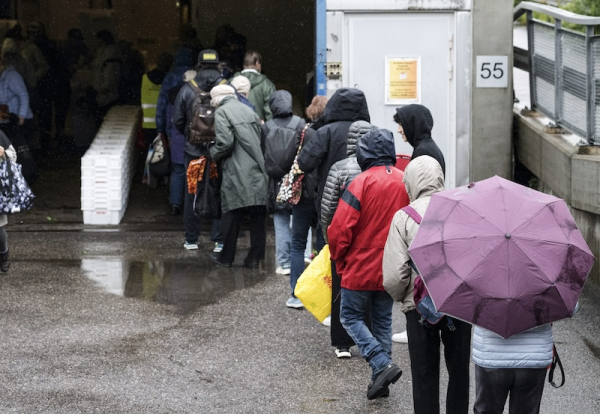Revised figures show deeper rise in poverty from welfare cuts

People queue for food at the Myllypuro food distribution line in Helsinki. Photo: Roni Rekomaa / Lehtikuva
- Previous Article Cool, wet weather continues with frost and hail risk
- Next Article Eagle S crew on trial over undersea cable damage
New calculations by Finland’s Institute for Health and Welfare (THL) show that government welfare cuts are set to increase the number of low-income people more than previously expected.
According to THL, the reforms will raise the number of people considered low-income by 110,000, including 27,000 children. This is an increase from the earlier estimate of 98,000, which included 13,000 children.
The number of people receiving basic social assistance, however, is now expected to rise by only 30,000. Earlier models had projected a 100,000-person increase.
THL published the revised projections on 25 August following updates to its microsimulation model. The new approach includes monthly income variation and health expenses covered by basic social assistance, as well as statistical methods to account for underuse of benefits and unreported wealth.
“The new model is significantly more accurate. Monthly income data and health costs allow us to detect households with temporary eligibility,” said Jussi Tervola, research director at THL.
The model reassesses the effects of welfare policy changes made in 2024 and 2025 under Prime Minister Petteri Orpo’s government. These changes include cuts to core benefits such as unemployment security and general housing allowance. The model also evaluates the government’s proposed 2026 reform to basic social assistance.
That reform is expected to lower government spending on basic social assistance by tens of millions of euros and reduce the number of recipients. It includes a reduction in the basic component of the benefit, elimination of the earnings disregard, and tighter eligibility criteria.
The earnings disregard allows recipients to earn a limited income without their benefits being reduced. Removing this feature will reduce financial incentives to work, according to previous assessments.
THL said the changes will not only increase low-income rates but also deepen poverty among affected groups. Although the number of recipients may fall, many who lose eligibility will not have sufficient income.
“Even with improved simulation, the reform’s effects remain difficult to assess accurately, especially regarding combined impacts. Exact figures on poverty are still hard to give,” said Joonas Ollonqvist, a senior researcher at THL.
The new model represents a shift from earlier assumptions. Previously, THL simulated benefit eligibility for all who would qualify on paper. The updated method focuses on actual recipient numbers, aiming to reflect real-world behavioural and administrative factors.
THL noted that early estimates were uncertain due to incomplete data. The latest model improves precision but does not eliminate uncertainty, particularly concerning the long-term effects of policy reforms.
According to THL, increases in client fees and medicine co-payments are likely to push some people back into eligibility for social assistance, partly offsetting reductions in other areas.
The government’s planned changes to the basic social assistance system are scheduled to take effect in 2026. The current projections are based on the SOTE-SISU microsimulation model, developed to assess the combined impacts of social and healthcare policy reforms.
The research is part of the INVEST flagship project, funded by the Academy of Finland, which examines inequality, interventions, and the welfare state.
HT
- Previous Article Cool, wet weather continues with frost and hail risk
- Next Article Eagle S crew on trial over undersea cable damage
Source: www.helsinkitimes.fi
